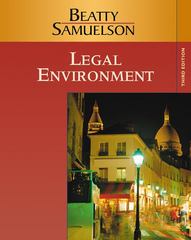Question
1. This question is based on the article, The COVID-19 Fiscal Multiplier: Lessons from the Great Recession, by Daniel J. Wilson, published on May 26,
1. This question is based on the article, "The COVID-19 Fiscal Multiplier: Lessons from the Great Recession," by Daniel J. Wilson, published on May 26, 2020, by the Federal Reserve Bank of San Francisco as part of its Economic Letters series. The article tries to assess the potential economic impact of the fiscal response to the COVID-19 pandemic. It draws parallels between the fiscal responses to the current downturn and to the Great Recession of 2008-2009 to estimate the potential range of the current fiscal multiplier and, thus, assess the extent of economic recovery in the coming quarters.
(a)According to the article, how do the sizes of the fiscal responses to the current downturn and to the Great Recession compare in terms of dollar value and as percent of GDP? [8]
Answer:
(b)According to the article, which component of the recent stimulus package had no counterpart in the 2008-2009 stimulus package? If that component is set aside, how does the composition of the rest of the fiscal response to COVID-19 compare with the composition of the fiscal response to the Great Recession? [8]
Answer:
(c)The article mentions that the fiscal multiplier rises as the marginal propensity to consume (MPC) increases. Why does a rise in MPC increase the fiscal multiplier? [8]
Answer:
(d)According to the article, why is the MPC higher for "liquidity-constrained" households compared to those that have liquid assets or can easily borrow when needed? [7]
Answer:
(e)According to the article, the 2020 fiscal stimulus package amounts to about 11% of the 2019 US GDP. Given the article's conclusion about the range of the fiscal multiplier under current conditions, how much the US GDP is expected to rise in the next couple of years as a result of the fiscal stimulus? [8]
Answer:
(f)The 2020 fiscal stimulus package and the Fed's actions that have used highly expansionary conventional and unconventional monetary policy tools have raised the prospects of the US economy and have helped the US stock market to recover quite strongly. They have prevented many other asset prices from falling. Would the impacts of the fiscal and monetary stimulus policies on asset prices help or hinder economic recovery in the US this year? [7]
Answer:
(g)Extra Points Question: The article points out that the fiscal multiplier is found to be higher when the interest rate is at the zero lower bound (ZLB) compared to the situation when it is above zero and is not kept constant by monetary policy. What factors may explain the higher fiscal multiplier at the ZLB? Please use the IS-LM model to make a case for your answer. [10]
Answer:
Step by Step Solution
There are 3 Steps involved in it
Step: 1

Get Instant Access to Expert-Tailored Solutions
See step-by-step solutions with expert insights and AI powered tools for academic success
Step: 2

Step: 3

Ace Your Homework with AI
Get the answers you need in no time with our AI-driven, step-by-step assistance
Get Started


